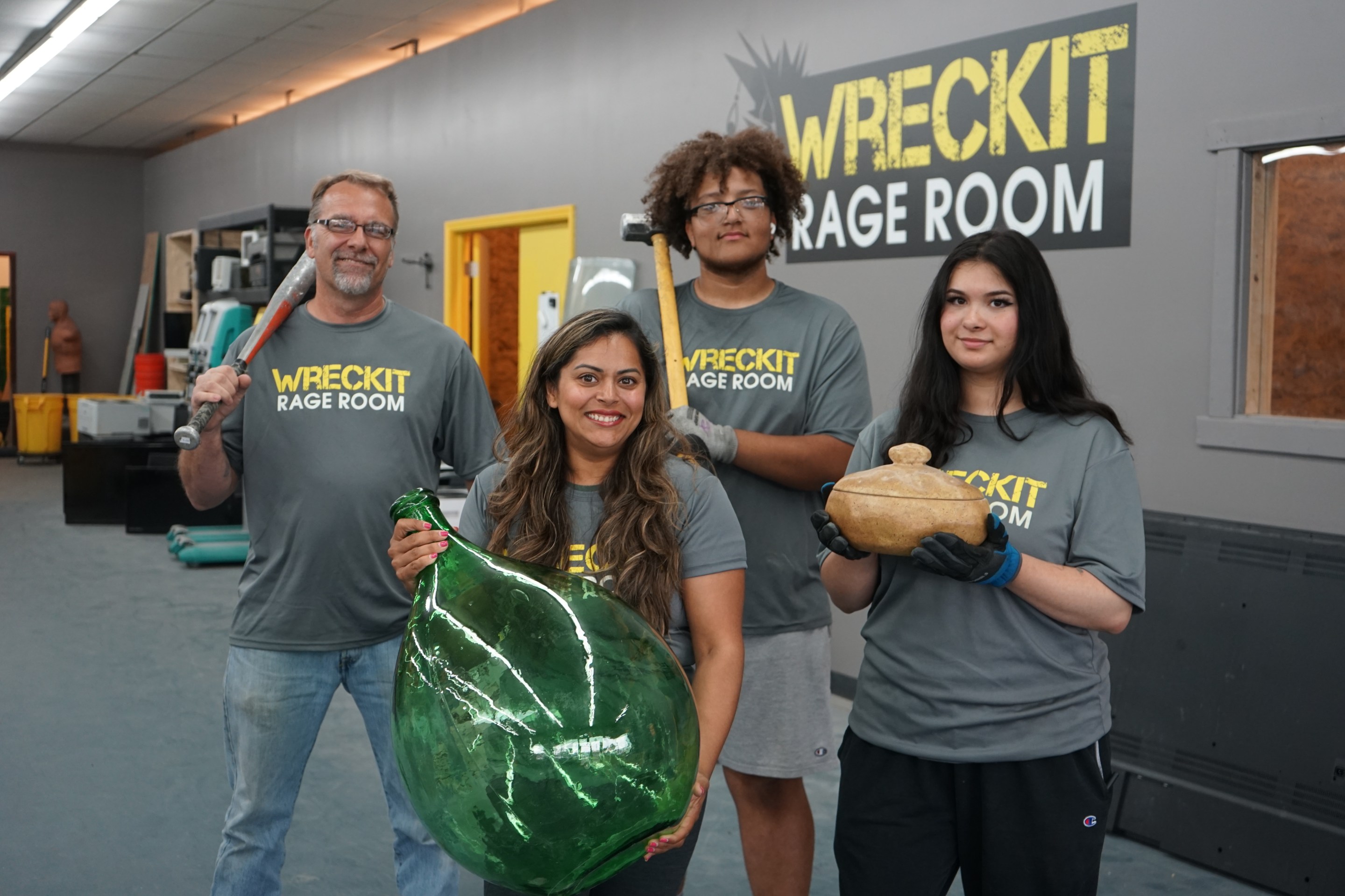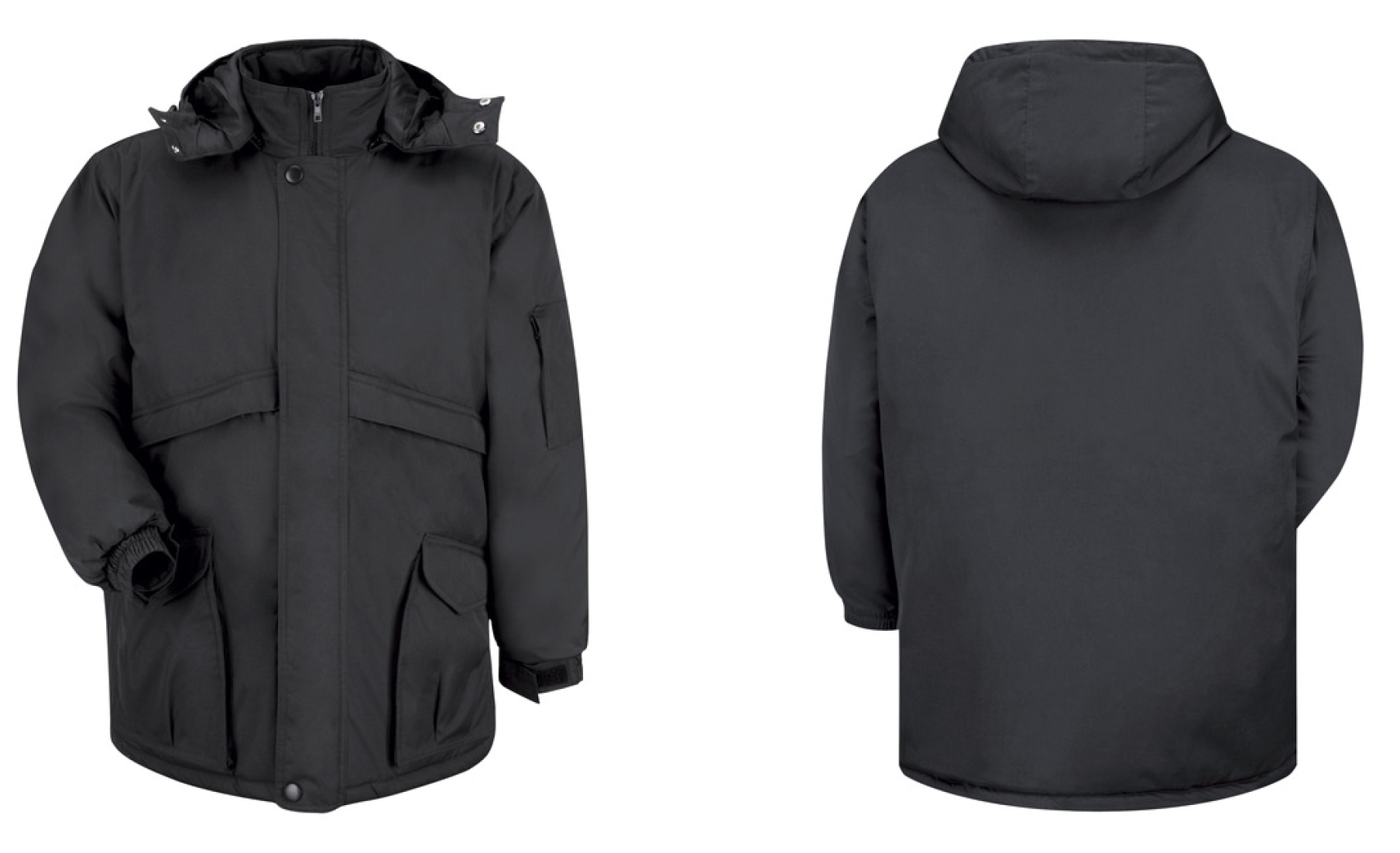The dealer of destruction is taking me shopping. It’s a Monday afternoon in Savage, Minnesota, and he’s given me $20 to burn.
I can choose two basic items—computer accessories, old cameras, coffee pots—or one premium piece. There’s a combo VCR/DVD player, glass wine-making jugs, mannequin heads that cosmetology students practice on. What catches my eye is a lamp.
The clear glass body is filled with hundreds of seashells. It feels like wishing for more wishes. I imagine the satisfaction I’ll feel when, in just a few moments, I swing a baseball bat into the side of the light.
That’s a great choice, confirms the dealer of destruction, aka Drew Crosby. Crosby, WreckIt Rage Room’s director of operations, is soft-spoken, good with people, and really enjoys showing off his smashable gallery. There, I can choose two more items. It’s part thrift store, part formal dining room, with China cabinets arranged in a horseshoe and filled with all manner of vases, knick-knacks, and décor.
“I always tell people to open up the cabinets, pick things up, see what speaks to you. Maybe it’s something your grandma would have yelled at you for even looking at,” Crosby says. “For me, my grandma would yell at me, 'Don't go near my Franklin Mint plates because they're gonna be worth money someday.’”
I select a palm-sized porcelain country church, dull white with faux snow, and a miniature of a young bear learning letters who’s giving an apple to his bear teacher. I feel vulnerable. But that’s probably just me, as a chronically depressed and anxious person, overthinking things.
Selection should be simple, according to Gee Decker, owner and chaos coordinator at WreckIt. “They go out with the bang,” Decker says, “and they have one last purpose before they end up either recycled or in the landfill like they were going to anyway.”
WreckIt opened on January 26, 2023, after a month-long soft launch. I drive past the building on the Savage-Burnsville border on the way to my day job. Its black and yellow construction-zone color palette implies serious work happens inside. I’d imagine people destroying old TVs and appliances. Metal, plastic, glass, strewn across the floor. Who’d sweep it up?
What really caught my attention was the claim on WreckIt Rage Room's sign: "Cheaper and way more fun than therapy." Maybe the fun part was true. I wasn’t convinced.
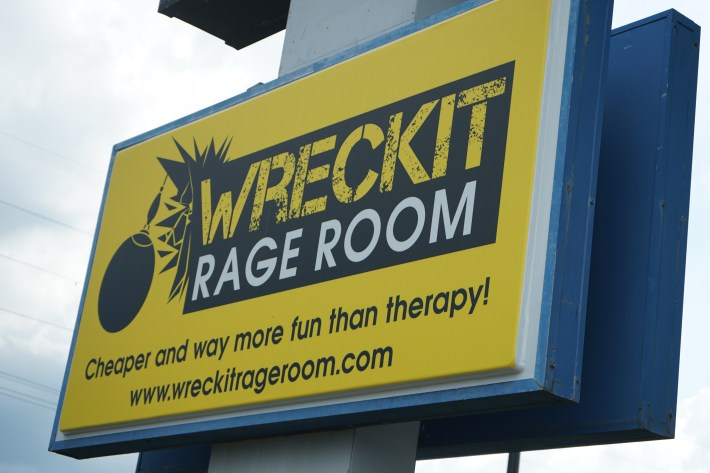
Still, as I would leave work early every Tuesday for yet another talk therapy session, I’d wonder if I’m headed to the right place. When you’ve been treading through the same shit for two decades, there’s a desperation, a longing to be fixed, and that keeps my options open.
Rage room, break room, anger room, smash room—whatever they’re called, they all present a fundamental question: Is it just for fun, or is it actually therapeutic?
Most people try it on a whim. Dates, corporate events, and kids’ birthday parties all take place at WreckIt. But people also go to cope with whatever life has thrown at them. WreckIt hosts breakup and divorce parties. People who work in fields where they need to compartmentalize—social workers, first responders, and even therapists—are regulars. Among the popular items in the smashable gallery are small mirrors and pieces of glass on which customers can write things they’ve been holding onto, memories or struggles they’d like to leave behind in shards.
Decker sees this side. While visiting Colorado with her family, she saw how going to a rage room helped her daughter work through personal struggles where other approaches had failed. After too many years in corporate America, she needed a clean break (pun intended), and decided to provide this experience in Minnesota.
“Rage and anger and anxiety and hurt are all very physical emotions that sometimes you need to get rid of physically, and we just provide a safe place to do that,” Decker says. The body keeps the score, after all.
Still, she walks a fine line, adding: “On the flip side, people love coming in and just doing something they don't get to do in real life.”
After suiting up with a face shield and gloves, I sync my phone with a speaker to choose the soundtrack to my WreckIt experience. Crosby isn’t too interested in what I’ll listen to. From Metallica to Taylor Swift, chamber orchestra to circus calliope, he’s heard it all. “‘Break Stuff’ by Limp Bizkit—I used to like that song, but I've heard it about 10 million times now,” he says.
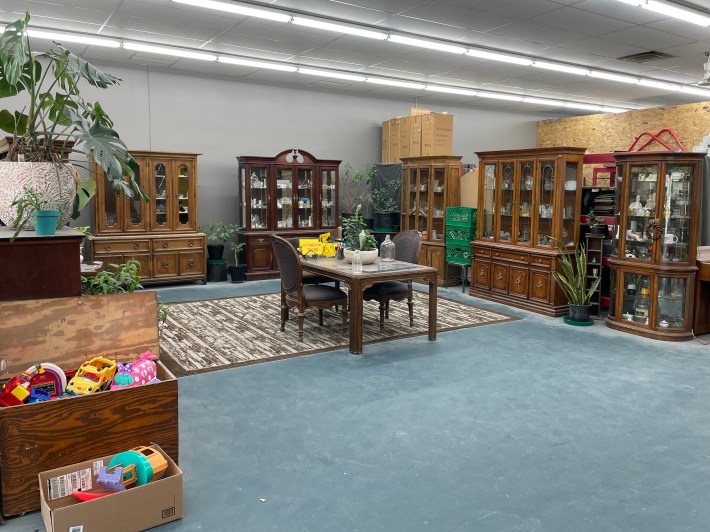
On the floor of room No. 1 sits a pile of preselected smashables. There are glasses and ceramic plates, an old space heater, a computer tower, and so many beer bottles. My instruments of ruination include a sledgehammer, crowbar, and mangled metal baseball bat. Along with a steel-covered wall, there are stumps to set objects on to avoid damaging the concrete floor, and there’s a galvanized pipe to use as a tee.
Crosby explains the safety protocols, then leaves. I settle on a screamo playlist I made for running, back when I did that. And then I stall. A nervous energy pulses through me, an electricity in my chest and down my arms. “Am I really going to do this, to smash all these things?” I wonder. It’s just so silly, right?
Still, I slide a Modelo bottle neck-first into the tee, step back, loosen up, and swing.
WreckIt is currently Minnesota’s only rage room, though not the first, and people come from all over. While Decker emphasizes the huge amount of community support, some uncertainty remains.
“My fear is that WreckIt Rage Rooms [sic] may codify for [people with anger management challenges] such destructive behavior as OK and unwittingly encourage it,” Savage resident Ken Dacas wrote in a January letter to the editor in the Prior Lake American. “I wonder what psychologists and psychiatrists think of WreckIt Rage Rooms [sic]?”
It’s a fair question.
The day after I visited the rage room, I mentioned the experience to my therapist.
Inside the rage room, my therapist explained, there’s an intentional mind-body connection that has the potential to be very cathartic. They even suggest that they might try it sometime. Since expressing rage is not normalized, they added, it’s great to have a safe space, with full permission to be playful and destructive.
This opinion isn’t universal. Some articles suggest rage rooms could reinforce destructive habits for people dealing with anger management issues.
Most naysaying points to a 1959 study, “The Catharsis of Aggression,” in which researchers hurled insults at test subjects. Afterward, some participants hammered nails for 10 minutes, while the control group had a cooling off period. The hammer-wielding participants ended up angrier than the control group. This example is touted to show why rage rooms probably won’t reduce aggression. But if someone called you mean names then made you do manual labor, I doubt you’d be too fucking pleased either.

When balanced with other strategies, rage rooms can offer therapeutic benefits, according Dr. Molly Ruggles, a clinical psychologist at FamilyMeans Center for Grief & Loss in St. Paul.
“In thinking about our overall emotional and physical well-being, a life rich in opportunities that help our brains get regulated—through movement, connection with others, and a reduction in external stressors—is key,” Ruggles says. “While simply visiting a smash room on a weekly basis is likely not sufficient to achieve emotional well-being, some may find that it is a helpful piece of their emotional well-being puzzle.”
Anger is a healthy, natural emotion. Traumatic experiences like loss, oppression, or victimization can transform anger into rage, which lives in our survival brain, according to Ruggles.
“When we are in our fight/flight response, our brain tells our body to do something. In truly dangerous situations, where fighting or fleeing gives us the best chance at survival, the fight/flight response is adaptive,” she says. “However, as humans we are exposed to many stressful experiences—being cut off by another driver, feeling micromanaged at work, or a disagreement with a partner—that still may trigger a fight/flight response.”
Like many adaptive traits, a full-blown fight or flight response in everyday situations can become pretty maladaptive, pretty quickly.
“The dilemma becomes finding a way to give our body the chance to act out this anger in a way that is not destructive to ourselves or others,” she says. “Doing something physical can help our brain and body move through the flood of fight/flight stress hormones and allow our brain and body to come back into a state of regulation.”
Some folks go for a run. Some punch a pillow. Others chuck Tito’s bottles against a steel wall and bash miniatures with a crowbar while Thursday’s “Understanding in a Car Crash” blares.
“Our body gets to act out the aggression, but without causing harm to ourselves or others,” Ruggles explains.
Whether going for therapy or for fun, Crosby believes the allure is that breaking things is taboo.
“You can see it fly. You can see it shatter. And then you walk away from it,” he says. “It's a way to let it go and lighten your mood.”
Now it’s my turn. In the room, I’m shattering. Crushing. Destroying.
And, no joke, it’s a workout. It’s surprising which items offer the greatest satisfaction. The seashell lamp didn’t disappoint. The high-pitched shatter of thin glass, the shells cascading onto concrete. Even throwing beer bottles was enjoyable, much less tossing them into the air to swing at.
Later, I tell my therapist the most rewarding thing to break was a computer keyboard. I, the professional writer, bashed it against a stump, jettisoning letters and command keys in a QWERTY spray. Read into that all you'd like.
Still, is this cheaper and way more fun than a CBT session?
You can visit the rage room to throw bottles for $20. Complete experiences range from $90 for two people for 25 minutes to $350 for eight people for 75 minutes.
In the Twin Cities, psychotherapy typically costs $250 for “intake,” then $100-$200 for subsequent sessions. But rates vary wildly. The affordability depends on one’s insurance coverage or lack thereof.
Growing up without health insurance, I count myself super fortunate to have access to two options. With my previous high-deductible plan, 60-minute sessions cost $125 out of pocket. Specifically for this reason, I switched to a PPO, which requires a $35 copay each visit, plus a $50 monthly premium.
If I went to WreckIt once a week with other people, I’d call it a wash. But without health insurance, the rage room is cheaper.
But there’s no doubt on the second question: The experience was way more fun than therapy.
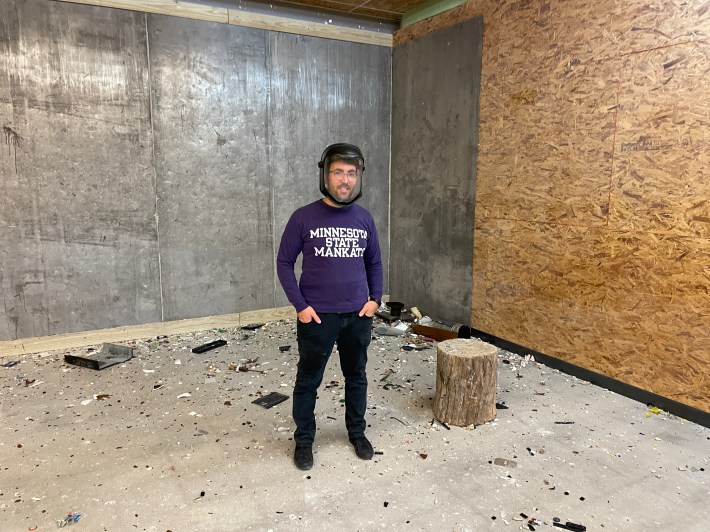
When it’s all done, I feel as if I’ve been in there for hours. “How was it?” Crosby asks.
I shrug. “Not transformative.”
“That’s OK,” he says. “It’s not always.”
Still, when I leave, I’m less bothered by every other motorist’s terrible driving. My body feels limber, less knotted up by stress.
Did it help? Yes, in some ways.
Am I fixed? Not by a longshot.
In fact, as I write this, a month after visiting WreckIt and a couple weeks past my deadline, I’m just coming out of one of my worst depressive episodes in two years. I tell people I see, “It’s been a month!” And I try to laugh it off when I look tired, not mentioning the incredible stress I’ve been under, the panic attacks, the dark places.
Going to sessions, doing the work—that will provide the most relief in the long run. But what I’d rather do is put my whole body into pitching a Coors bottle at WreckIt’s steel wall.
On my way to therapy the day after visiting WreckIt, I remember something Crosby said: “This is like the icing on the cake.” Icing makes sense. Of course rage rooms are cheaper and more fun. It’s like comparing birthday cake and ice cream to a raw vegetable salad and kale smoothie. Which would you be more excited to enjoy?
As much as the rage room helped her daughter, as much as she’s seen it help others, Decker advises people not take the catchphrase too seriously. “Cheaper and more fun than therapy” was just a joke she came up with to fill space on the sign.
“I have ‘Therapy Thursday’ every Thursday,” she says. “But this is just a different type of therapy.”
WreckIt Rage Room
3930 CR-42 W., Savage
Sunday-Wednesday: 1–6 p.m.; Thursday: 1–8 p.m.; Friday-Saturday: 1–10 p.m.
